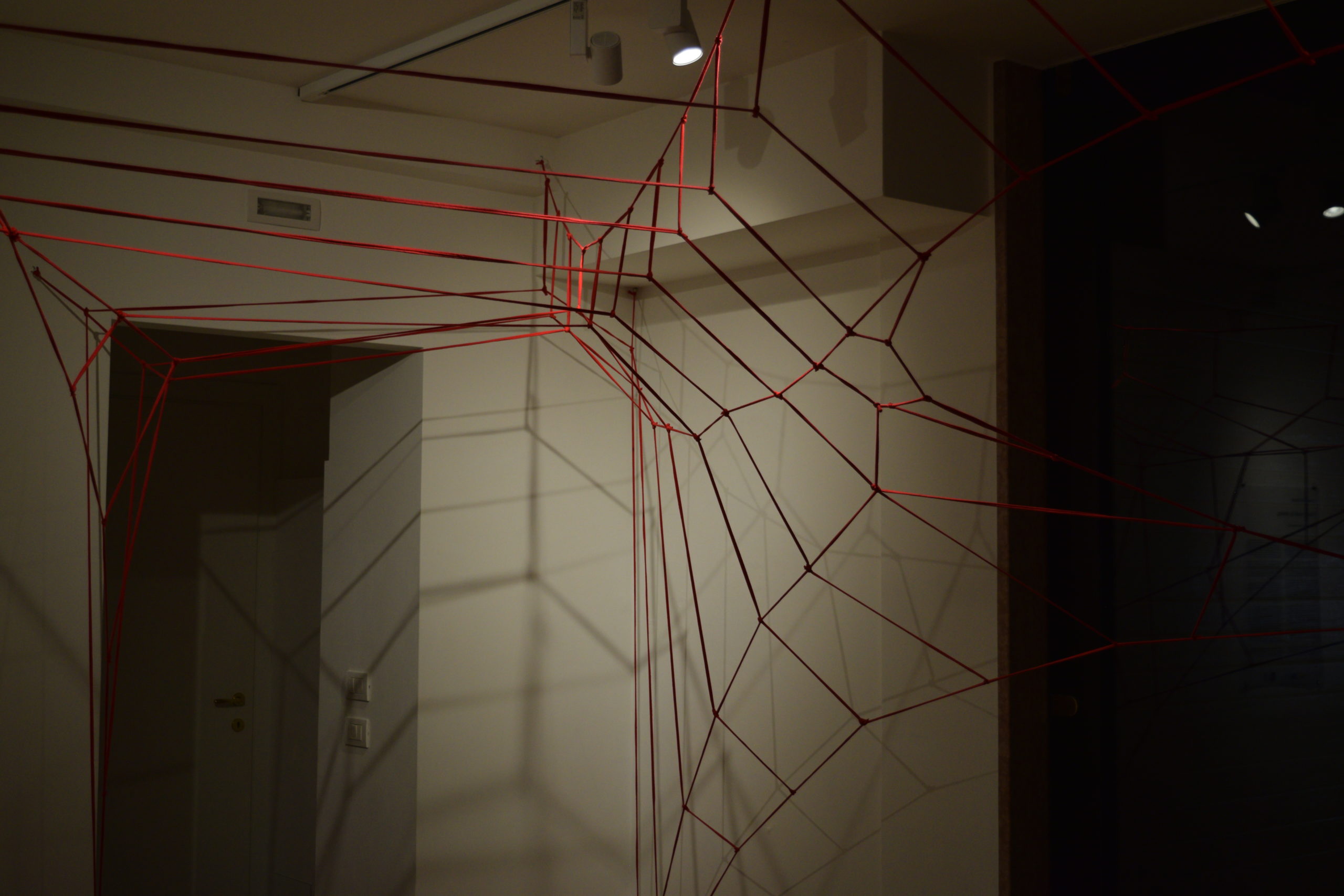
A Home Made by Drawing #8
Fogo, Cape Verde. 2019.

A Home Made by Drawing #14
B#S Gallery, Treviso, Italy. 2019.

A Home Made by Drawing #18
Serra Aire e Candeeiros, Portugal. 2020.

A Home Made by Drawing #14
B#S Gallery, Treviso, Italy. 2019.
Un mur, épais contre le vent du Nord, poreux à la lumière du Midi ; une maison roulante, voyageuse, transparente à toutes les faveurs du Midi… Que serait une chambre pour nous, Nathanaël ? Un abri dans un paysage.
André Gide, Les Nourritures Terrestres : 138
A Home Made by Drawing is an art-research and anthropological long term project exploring the human practice of dwelling as symbolic and relational activity, and the provisional nature of human meaning-making and identity. The project investigates the dialectic between openness and closure, finite and infinite that generates a constant, ambiguous and unsolvable movement between contraction and expansion, between chaos and order. Drawing on Tim Ingold’s (and Heidegger’s) approach to dwelling, A Home Made by Drawing explores non-static and fluid manners of home-making that evoke an alternative and nomadic relationship between human beings and their environment, also suggesting different and liquid notions of identity and belonging and inviting us to be ‘at home in the world’. In A Home Made by Drawing, I employ a humble textile material to create ephemeral structures inspired by vernacular architectures and knotting and embroidery techniques, as manners to re-signify places and objects. Growing with an organic logic, these ‘shelters/drawings’ develop in the making, without a previous project. They are adaptive dwellings, drawings in space that inhabit and ‘make home,’ temporarily borrowing an environment using pre-existent anchorage points. They intend to be imaginative and poetic invitations to reinvent human beings’ place in the world, to envision an alternative and utopic way/space of living, different way of ‘inhabiting,’ especially at a time when a mutation in the relationship between humanity and the environment is tantamount to its future survival. These architectures are, therefore, ‘shelters for alternative thinking,’ symbolic new/ancestral dwelling forms from where to start rethinking the relationship with the environment and with the landscape.